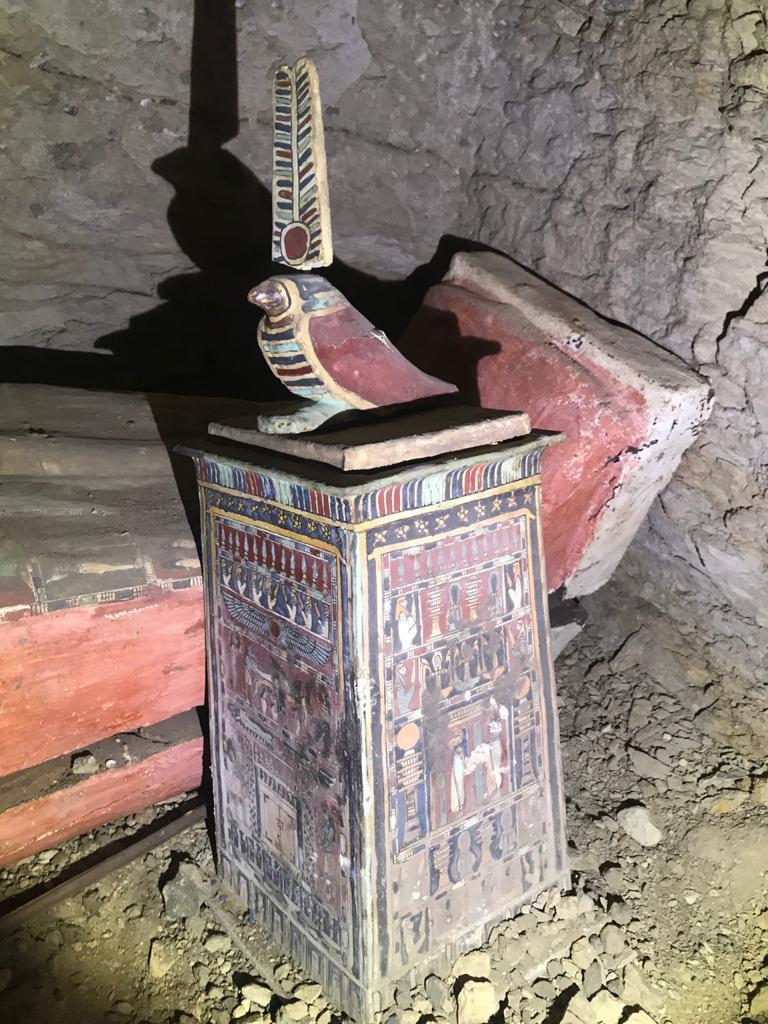The striking painting, known as The Portrait of a Bearded Man, hails from the second century AD when Egypt was under Roman control.
Consequently, the painting does not resemble Egypt's two-dimensional murals that adorned the walls of its numerous temples and tombs. Instead, it is a very life-like depiction of the person it was buried alongside nearly 2,000 years ago.
The portrait was discovered in Faiyum, some 62 miles southwest of Cairo. Experts have dated it to between 170 and 180 AD, and the painting one of about 1,100 similar works of art from the Roman period of Egypt's history. The portraits were painted onto wooden boards and wrapped up into the linens used to hold their mummified owners together.
Archaeologists believe these depictions not only represent a likeness of their owner but also hold clues about their status in life - one they held or aspired to hold before death. And according to a team of researchers who analysed microscopic amounts of purple pigment from the portrait, status played a big role in how these portraits were assembled.
Darryl Butt, a material scientist at the University of Utah, US, who co-authored a study of the portrait, said: "We're very interested in understanding the meaning and origin of the portraits, and finding ways to connect them and come up with a cultural understanding of why they were even painted in the first place." A small part of the Faiyum portrait shows purple marks on the man's Roman toga or robe - a symbol of status known as the clavi.
Glenn Gates of the Walters Art Museum in Baltimore, where the portrait is housed, said: "Since the purple pigment occurred in the clavi - the purple mark on the toga that in Ancient Roman indicated senatorial or equestrian rank - it was thought that perhaps we were seeing an augmentation of the sitter's importance in the afterlife."
But according to Dr Butt, the purple pigment has only raised more questions about the Egyptian mummy.
In some cultures, the colour purple is viewed as a symbol of death, while others consider it a symbol of life. Purple was also often associated with royalty in ancient times and is still thought of such today. Queen Elizabeth I, for instance, forbade everyone but royalty from wearing the colour. And purple is believed to have been particularly revered in the Byzantine Empire as a symbol of power.
Dr Butt said: "So the presence of purple on this particular portrait made us wonder what it was made of and what it meant. The colour purple stimulates many questions."
To better unlock the secrets hidden within the portrait's pigments, Dr Gates sents a microscopic particle to Dr Butt and his team to analyse. The speck of paint was about the same width as a human hair - 50 microns across.
Dr Butt said: "The process of analysing something like this is a bit like doing surgery on a flea." However, the expert and his colleagues were able to determine the purple pigment was synthetic in nature, and not naturally from the glands of the Murex sea snails as most purple dyes were at the time.
Instead, the researchers have suggested the purple was an accident - possibly made by mixing together red and blue indigo dyes together. The dye was then likely mixed with clay or a silica material into a pigment that was bound with beeswax. Pigments made this way are known as lake pigments.
Dr Gates said: "Lake pigments were thought to be without crystallinity prior to this work.
Source:express








